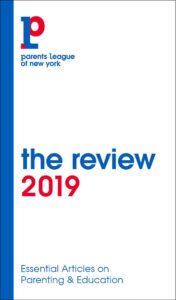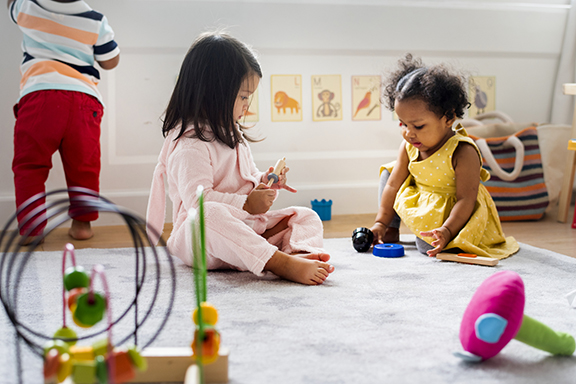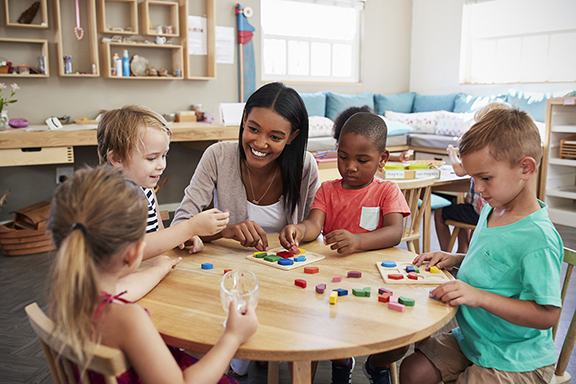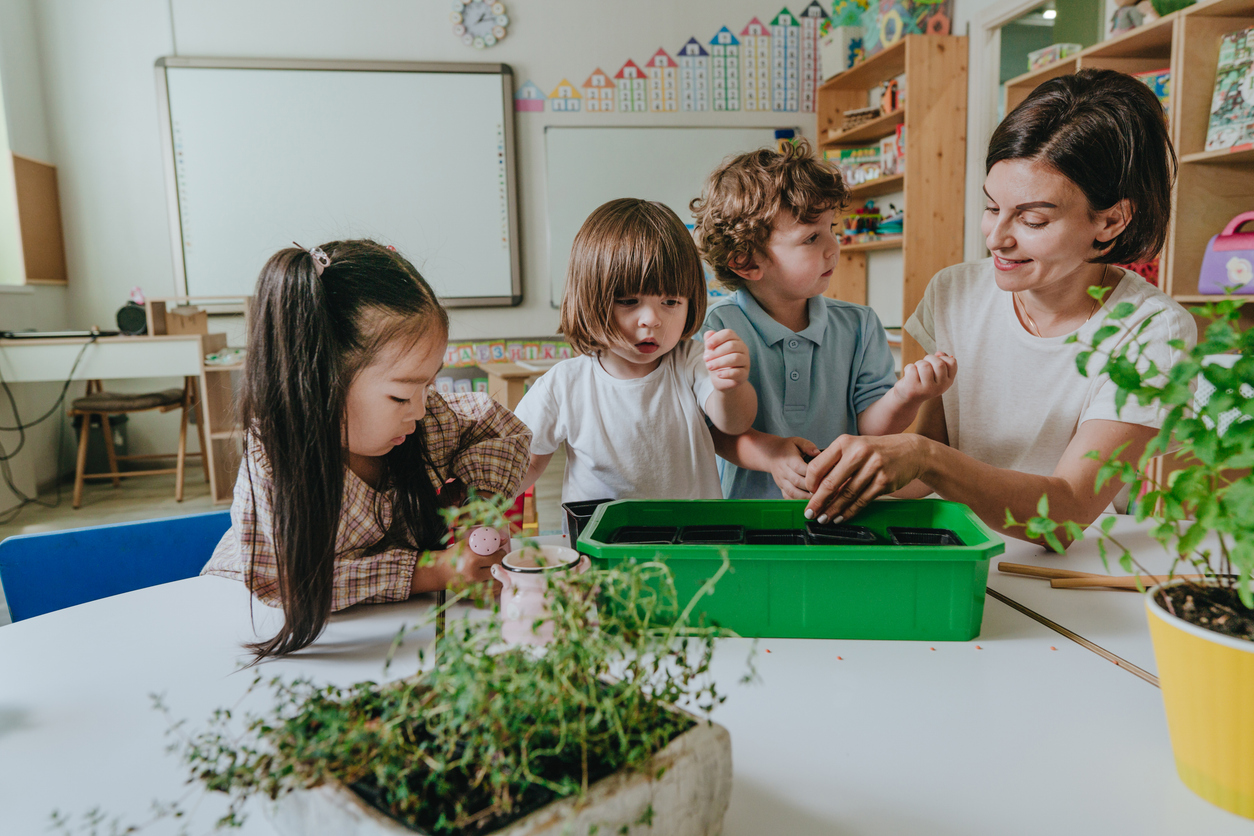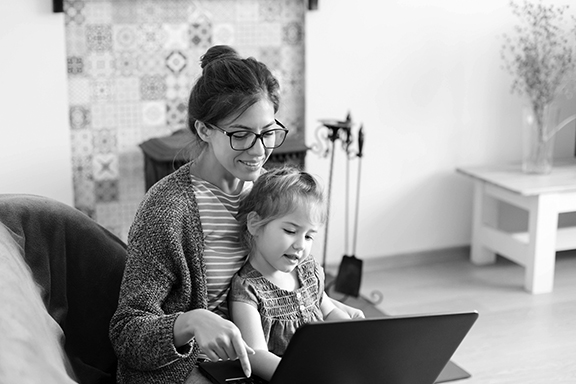Boarding School: Now More Than Ever
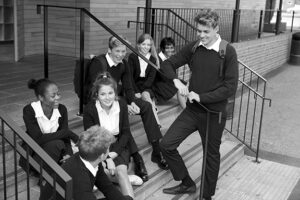
Our teenagers are exhibiting a disturbing phenomenon. In terms of the content of the media they consume and to which they are exposed, they are growing up faster than ever. Yet, despite this, many cling to the safety net of childhood, exhibiting symptoms of “adultolescence.” As they enter college—precisely when they ought to demonstrate independence, confidence and an ability to navigate the world on their own—they are more fragile, less resilient, and more dependent than ever. This bedeviling dual diagnosis is particularly problematic when it is seen in students who seem to have had every advantage a good education can afford. What’s going on, and what can we—parents and educators—do about it?
Disappearing Childhood
In his 1982 book, The Disappearance of Childhood, New York University professor Neil Postman described the impact of “electric” communication technology on children:
[T]elevision erodes the dividing line between childhood and adulthood in three ways … : first, because it requires no instruction to grasp its form; second, because it does not make complex demands on either mind or behavior; and third, because it does not segregate its audience. With the assistance of other electric, nonprint media, television recreates the conditions of communication that existed in the fourteenth and fifteenth centuries. Biologically we are all equipped to see and interpret images and to hear such language as may be necessary to provide a context for most of these images. The new media environment … provides everyone, simultaneously, with the same information. Given the conditions I have described, electric media find it impossible to withhold any secrets. Without secrets, of course, there can be no such thing as childhood.
According to Postman, television caused childhood’s disappearance because children had ready, easily comprehensible access to adult or mature content—content previously difficult for them to access because it was principally stored and transmitted via books. His concern was network television circa 1982, when most parents of today’s high school students were not yet teenagers, Apple was six years old and the Macintosh did not yet exist. Postman’s concern now seems quaint or nostalgic. Children’s access today to adult content is everywhere, unfiltered by network censors, round-the-clock, and so much more explicit—and frankly, bizarre, than at any earlier time in history.
In the age of Snapchat, Tinder, 13 Reasons Why, Game of Thrones and video of the latest police shooting, the environment in which our children live and move inures them to extreme behavior heretofore encountered almost exclusively by adults. (Even we adults are adjusting to the intensity of today’s content.) Our children’s moral sensibilities—what they consider good, beautiful, true and even just normal—are shaped earlier than ever. No obvious solutions appear on the horizon. A parent or school can do an excellent job protecting a child from growing up too fast when the child is in the same room, but even that’s a game of whack-a-mole. We are not getting these genies back in their bottles. The new normal—at least a decade in the making, as we celebrated the iPhone’s tenth birthday last summer—is constant access to everything, no matter how mature the content, for every teenager. Yes, we parents and educators can and should try to enforce access and usage norms—but that is a drop in the ocean, a finger in the dam, Sisyphean. We need fuller, deeper solutions, ones that acknowledge the new reality within which children, teenagers and young adults live.

Teaching Conscious Consumption
So many well-intentioned parents and schools feel lost trying to help children of any age navigate this new terrain. The answer has to be more than simplistic rules about when students can and cannot use their phones or taking their phones from them when they violate rules. Although these types of measures are necessary, they are not sufficient to meet the scale of the challenge. Far from going away or getting better, the challenge will only intensify. Additionally, students (and adults) need help discerning between the truly destructive and dehumanizing uses of technology and those that are good, educational or perhaps ennobling. We need to equip students to develop autonomy from their devices and the wherewithal to turn them off, to not watch the viral video, to—as one student did last year—remove Snapchat from their phone for the summer, at least, and conquer their fear of missing out.
Wise and deliberate use must become the steady hum of both explicit and implicit conversations and teaching—saturating the student environment with winsome and engaging discussion that problematizes the devices that they—and we—now take for granted. Students need adults to whom they will listen to help them objectify their tools so that the tool does not shape them more than they shape it, a point Neil Postman makes early in his book Technopoly.
We need communities of educators who are ready, willing and able to do this type of thinking and take action. Today more than ever, students need adults in their lives who know how to engage them rather than just shut them down. In a boarding school, that can come as a brief, non-shaming, witty remark at dinner in the dining hall that appeals to the student’s inner sense that, no, this is not the right time to be looking at one’s phone. Or perhaps it’s a more deliberate conversation in the dorm about the impact on a teenager’s imagination and visual memory of binge-watching Game of Thrones—not to mention the ill effect of sleep deprivation on academic performance. Our teenagers’ best chance of developing the ability to resist media’s siren’s call is constructive conversation with adults they respect who are willing to interrupt their screen time.
A Safe Place to Tackle Tough Topics
A specific example of the shape these conversations can take, one that I never thought I would publish, may illustrate the unique opportunities boarding schools have to help students explore difficult topics with depth and candor. When I was a boarding school dorm parent several years ago, I became aware of fairly widespread pornography consumption by the boys in the house. I spoke to the three senior prefects in the dorm and we called an impromptu dorm meeting. The 35 10th- and 11th-grade boys, all “good kids,” felt awkward at first at the prospect of discussing this topic with me, their adult dorm parent, teacher, coach and advisor. But the mood lightened after I shared my own experiences in boarding school and then opened up to the central point, that just because something is pervasive and increasingly “normal,” it is not, ipso facto, okay or good.
The objective of the conversation was not moralism—that they’d walk away thinking “porn is bad”—but, rather, that they’d learn to analyze critically something that they took for granted. If an adult did not ask them to consider both the moral problems with this topic—the industry, the fact that watching pornography is against school rules—as well as the subtle but profound impact it could be having on them without their explicit knowledge or agreement—the frog in the pot as the water slowly comes to a boil—what would get them to reconsider their behavior? We laughed a lot during that conversation, which helped to make it less threatening and awkward. I knew that it had been at least partially successful when a very cool junior boy—a leader in the dorm—piped up in front of his peers, “You know, now that you mention it, Mr. Becker, it is really weird to watch other people having sex.”
That conversation may happen in a day school classroom, but is much more likely to happen in a nonacademic setting, one in which the students are relaxed and at home, the location where the behavior in question is most likely to occur. And it’s a conversation most parents do not want to have or do not feel equipped to have. But it—along with conversations on so many other topics—desperately needs to happen. We parents know that, as our children get older, more often than not an adult other than us is better situated to have these vital conversations. Boarding schools are filled with just such adults, ones who have practice engaging teenagers in these conversations as well as in, say, teaching chemistry—a rare combination of skills, indeed.
The point isn’t pornography. While its ubiquity contributes significantly to the disappearance of childhood, it is just one of the topics that teenage students need help navigating. These experiences need to be brought into the light, objectified, discussed for what they are—the warp and woof of life experience for teenagers: pornography; sexting; brutal uses of social media to take down peers; alcohol and drug use that is significantly riskier than 20 years ago; early courtship rituals that have devolved into swiping left or right; rampant consumerism; and the always-on and always-happy depiction of life promoted on Instagram—along with the incessant competition and accompanying self-doubt generated by how many “likes” a photo receives.
Most parents have neither the comfort level nor the experience to engage their child constructively in these conversations. We know that our children are most likely to shut down and roll their eyes at us. And parents are hard-pressed to articulate in the moment why these practices can become problems if not moderated, perhaps discontinued. Parents are more likely than experienced educators to relent in the face of, “But Susie’s parents let her do it.”
Delayed Adulthood
At the same time that children are growing up, in certain respects, faster than ever, a parallel phenomenon has emerged. Adultolescence, a delayed transition into adulthood, describes the fate of far too many emerging adults. Young women and men who graduate from good schools should be among the most prepared people on the planet for the next phases of life—college and beyond. Yet they experience anxiety and depression at increasing rates, have difficulty finishing college in four years, have trouble deciding on and obtaining full time employment, and act like adolescents through much of their 20s.
As sociologist Christian Smith and his colleagues wrote in their 2011 book, Lost in Transition, young people today (their decade-long longitudinal study focused on 18- to 23-year-olds) face five major problems: confused moral reasoning, routine intoxication, materialistic life goals, regrettable sexual experiences, and disengagement from civic and political life. Or, put more directly by Ben Sasse in his book, The Vanishing American Adult, “We are living in an America of perpetual adolescence. Our kids simply don’t know what an adult is anymore—or how to become one.”
To make matters worse, we know that it has not always been this way, that the decline in resilience among our teenagers is just that: a change from the past, and not a good one. At the risk of seeming nostalgic and extrapolating too much from a few examples, recall that Alexander the Great and Joan of Arc were teenagers when they achieved greatness. More recently and on American soil, a number of fairly average characters in the Little House On The Prairie historical fiction series displayed everyday heroism. Consider The Long Winter’s Cap Garland who, at the age of 16, rode with his friend Almanzo Wilder (Laura’s future husband) into the snow-covered prairie to find wheat to save their starving town. It was a high-risk endeavor, with a fairly good chance of death in an ongoing blizzard. They decided that if anyone should risk their lives it should be they because they did not yet have families who depended on them.
Today, our best and brightest ace exams and make national level sports teams, but do we think they would be up to the standards of even the most mundane examples from their historical predecessors? Our teenage heroes are more likely to be professional athletes and actors—talented and accomplished but hardly self-reliant and independent. Most 18-year-olds throughout history have been capable of surviving on their own if need be. Most 18-year-old independent school students today could not.
On the one hand, high school students explore more mature images, concepts and experiences than ever before. On the other hand, they seem less capable of navigating life’s vicissitudes—like the piggy who built his house out of straw only to see it blow away when the big, bad wolf appears. How do we help our children in their teenage years learn to construct their houses out of brick?
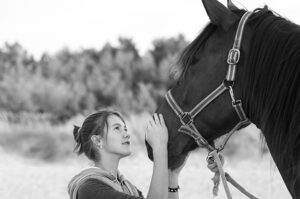
The Boarding School Antidote
Students need more than conversations, of course, to grow into mature young adults. An effective antidote for teenagers finding their way in this new world is participation in an integrated, holistic educational community—in other words, a boarding school. In boarding school communities, all adults and students agree to practice wise and deliberate engagement with media and devices in the midst of their day-to-day lives as students, friends, artists and athletes.
Moreover, in these communities, students experience the coming-of-age practices, habits and rituals (to cite Ben Sasse again) and outright challenges that used to shape young people at home. Boarding schools are increasingly intentional about how they equip students for a media-saturated world that invites them to avoid growing up, disabling them much more effectively than enabling them for the next phases of life.
A good example is the horse program at The Thacher School in California. Regardless of background, every 9th-grade student is paired with a horse to care for during the entire year. To state the obvious, horses need care whether a student is having a good day or a bad day or generally feels up to it or not. The program, while unique to this boarding school, is an ideal counterbalance to the iWorld that envelops most teenagers today.
Similarly, the founder of The Gunnery, Frederick Gunn, knew that students in 1850, the school’s first year, needed to encounter and learn to navigate the outdoors as preparation for life. (Mr. Gunn is credited by the American Camping Association as the founder of the modern American camping movement.) Today, the Gunnery’s Outdoor Program continues that tradition, premised on the understanding that learning to navigate an environment that is unresponsive to one’s immediate desires and comfort, one that requires careful planning and appropriate risk-taking and creative, in-the-moment problem solving, is ideal preparation for the zigs and zags of life after high school.
Boarding schools have existed for many years and, though no two are the same, nearly all require students to handle responsibility, overcome adversity, and practice leadership. Even the routine of getting themselves out of bed, ready for the day, to breakfast and to class—and that’s all by 8 in the morning—helps them to develop habits of engaged autonomy. By the time they leave boarding school, these young people are ready to live independently in college and beyond.
Engaged Autonomy
What about reading, writing, arithmetic, Mandarin, physics, STEAM, the violin and lacrosse? Of course these programs are the essential ingredients of any boarding school, and families should carefully evaluate their quality in person, asking tough questions of faculty and department chairs: What is the philosophy undergirding the school’s approach? How does that inform differentiated pedagogy in the classroom? But a school that gets perfect marks in its academic and co-curricular offerings yet fails to equip students for the realities of 21st-century teenage social life wins the battle but loses the war and therefore only contributes to the rise in fragile young adults.
Boarding schools offer outstanding academics, teaching and co-curricular activities in expansive, beautiful facilities. But more important, they offer communities of experienced teacher-mentors who can help achievement-oriented teenagers grapple with life today—and have the opportunity to do so multiple times and in multiple settings. When a student’s advisor is also his English teacher or lacrosse coach, or his Calculus teacher is also his dorm parent, he has multiple chances throughout each day and into the evening, often during a study hall break in the common room of the dorm, to consider the uses of technology and media in dialogue with an experienced educator who isn’t afraid of, and may even relishes, the conversation—and can also help with that knotty math problem. And, as an added benefit, boarding school students are more likely to learn to advocate for themselves with adults because they have daily practice, guided by teacher-mentors.
This does not discount the value of parents in the equation. Long gone are the days when mom and dad dropped off their child and did not see her again until Thanksgiving. Boarding schools have embraced parents as the valuable partners they are. As Dr. Kate Windsor, the Head of School at Miss Porter’s School, is fond of saying, “Parents of boarding school students don’t abdicate their responsibilities; they don’t parent less. They partner with the school and parent better. It’s a team approach that students need today more than ever.” It is hard for us, as parents, to learn to let go of our children. Boarding schools ease that transition, providing safe, nurturing environments that welcome parent engagement and participation in ways that colleges do not and should not. Both the teenager and the parent benefit in the end.
The best hope for our kids in the dynamism of the early 21st century is a combination of great parents, great teacher-mentors, and intentional learning communities that equip them for an ever-expanding life of the mind but also for the real, ever-shifting worlds in which they navigate. That is what boarding schools provide.
Peter W.E. Becker is Head of School at The Gunnery, a 9th through 12th grade and postgraduate coeducational boarding and day school in Washington, Connecticut. He is a past member of the Board of Directors of Parents League of New York.
This article first appeared in the 2018 issue of the Parents League Review. Get the current issue of the Review free with a family membership. Or purchase it separately.
